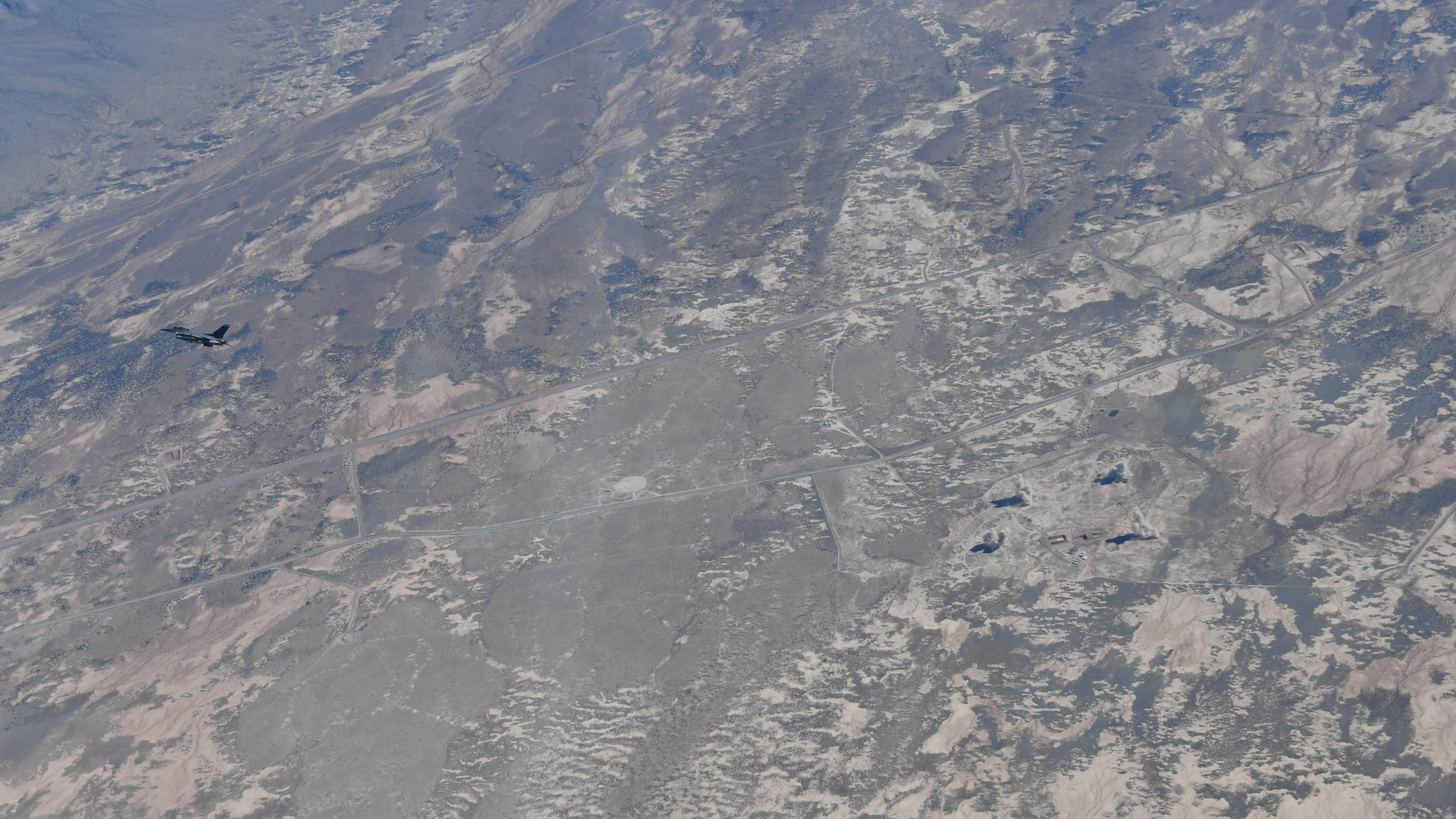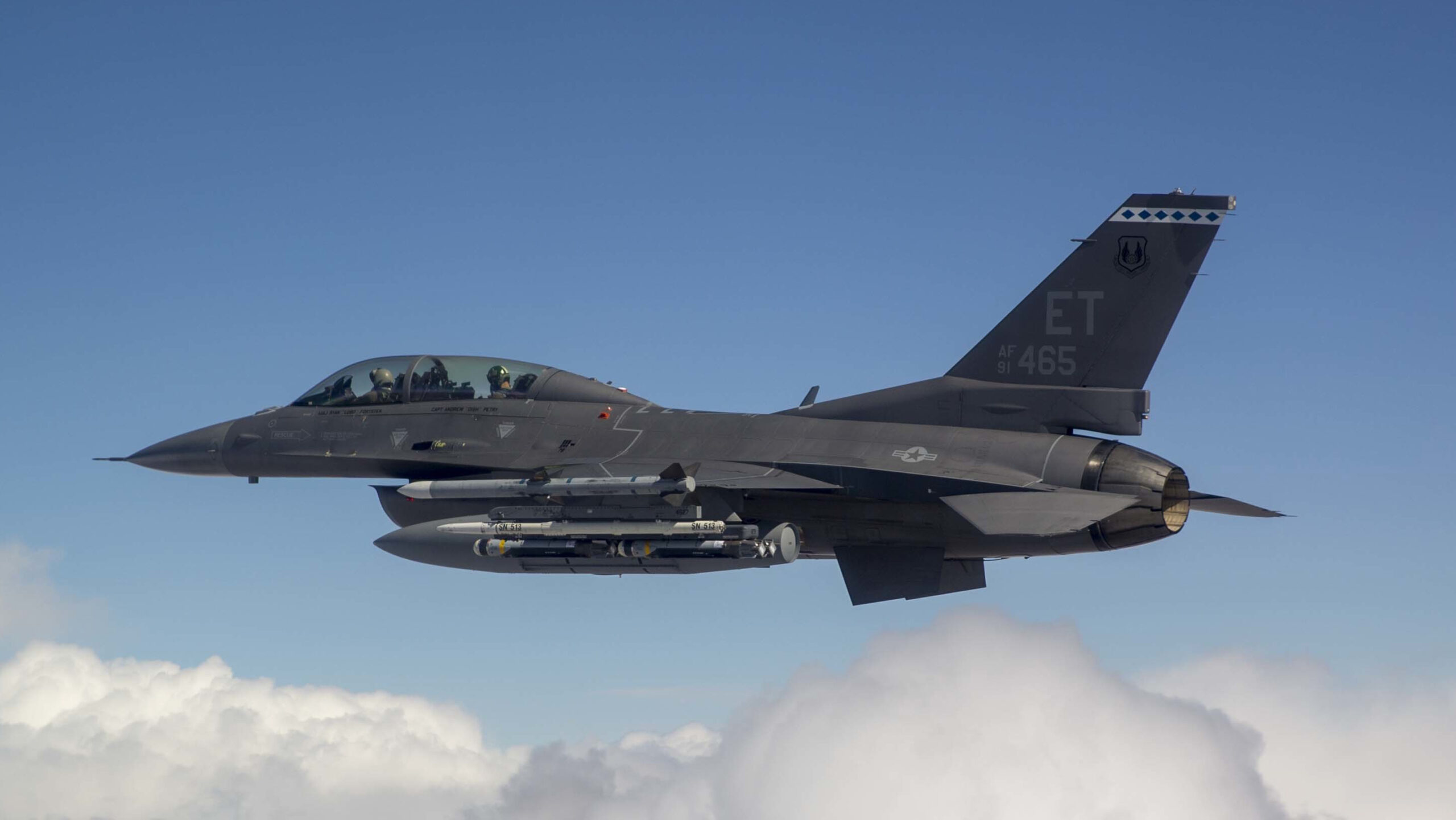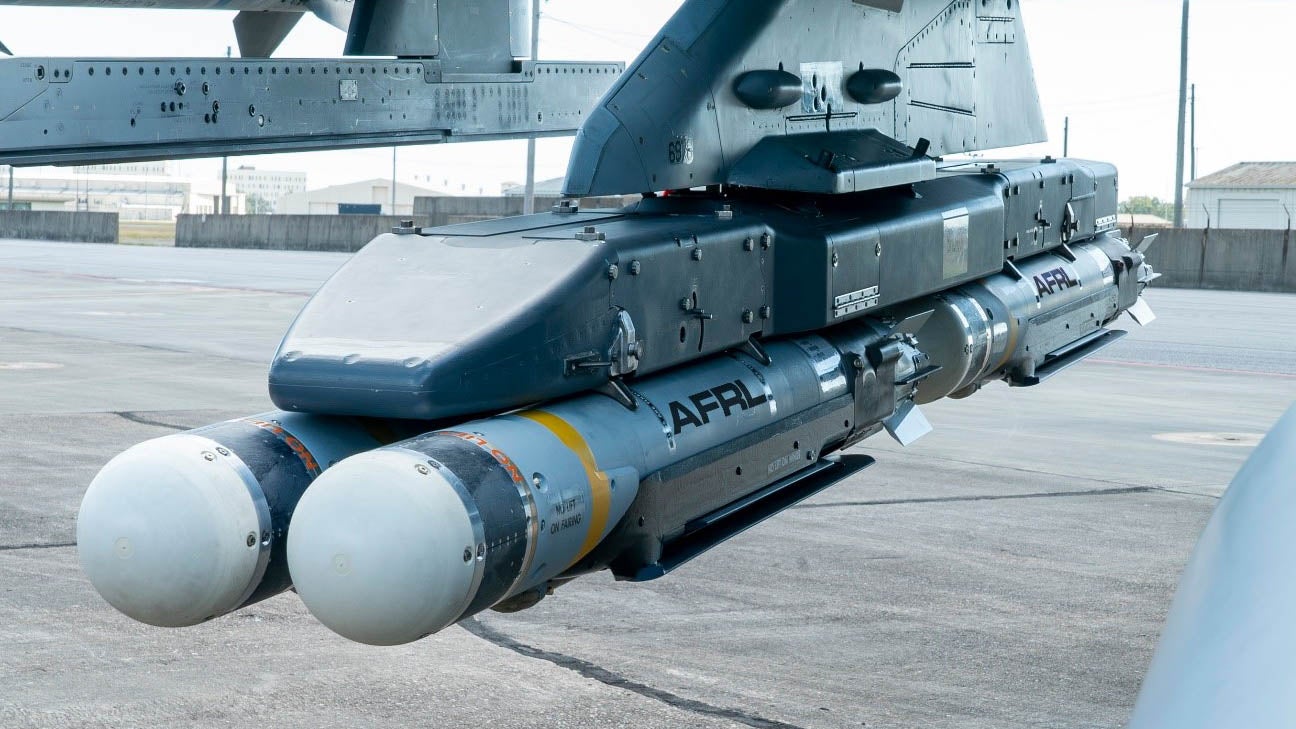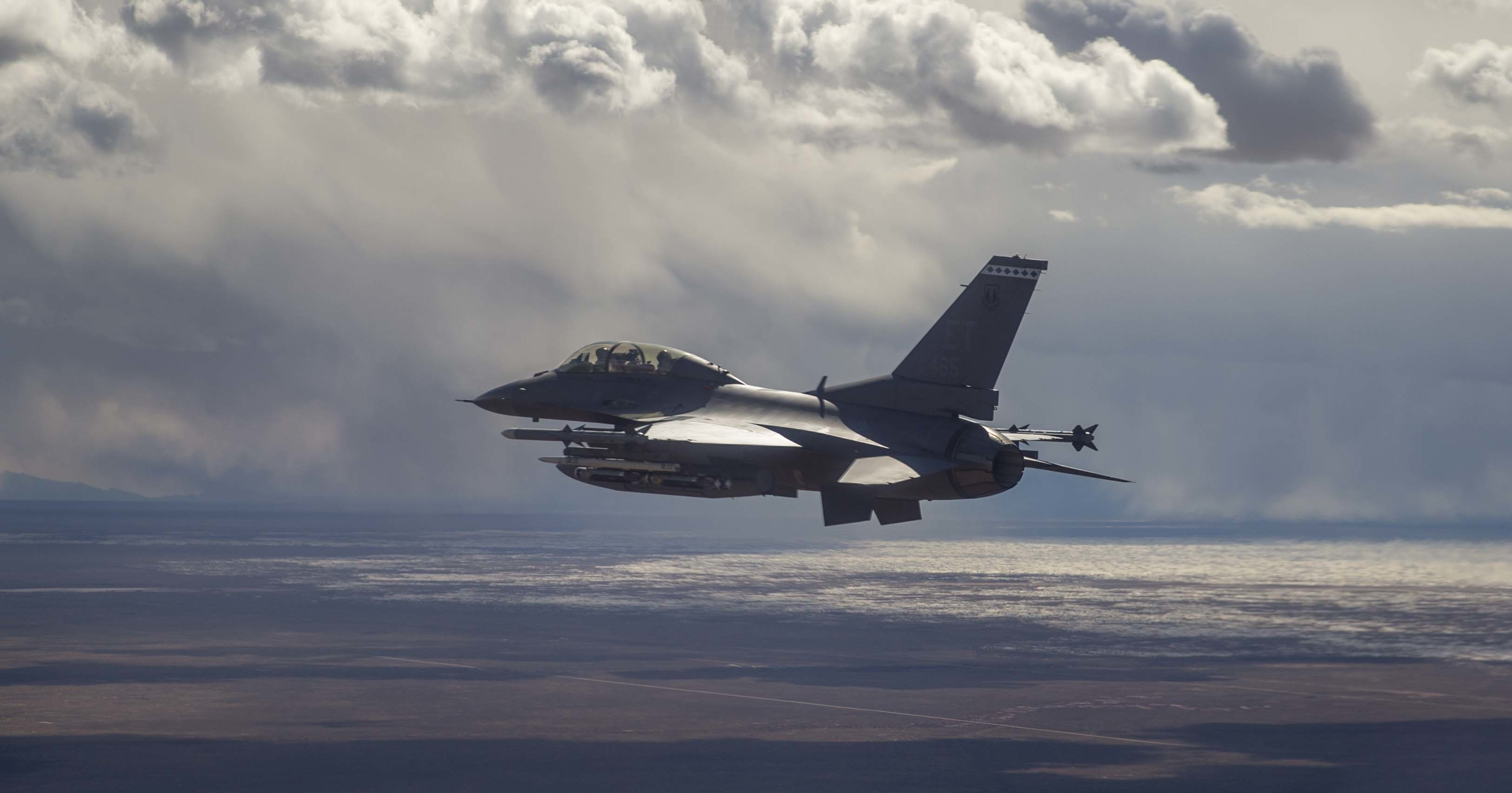The Air Force’s new swarming air-launched munitions program, Golden Horde, has been put to the test for a second time. The latest mission that we know about took place on February 19 and involved a two-seat F-16D Viper fighter jet from the 40th Flight Test Squadron, based at Eglin Air Force Base, Florida, dropping four of the specially configured Collaborative Small Diameter Bombs (CSDB).
Although details remain limited, the Defense Visual Information Distribution Service (DVIDS) today released four photos of the test, in which the jet is seen circling the target after “successfully dropping four CSDBs for the second Golden Horde test mission near Holloman Air Force Base, New Mexico,” according to the captions. The CDSBs are Small Diameter Bombs modified to incorporate networked swarming technology.

While the aerial imagery from the February 19 test clearly shows four puffs of smoke and dirt where the CSDBs impacted in close proximity, we don’t know for sure how successful the entire test was, or what kinds of parameters were involved. Still, the official photo release implied that they hit their mark.
This Golden Horde test mission follows the first test, which took place on December 15 of last year but was only announced in early January, and which you can read all about here. On that occasion, the two CSDBs launched subsequently failed to impact the simulated high-priority targets due to an “improper weapon software load,” which meant “the collaboration guidance commands were not sent to the weapon navigation system.”
In that first test, the weapons had been provided with pre-defined Rules of Engagement (RoEs) and determined that a GPS jammer was not the highest priority target. At this point, the weapons then collaborated to identify the two highest priority targets, although they ended up impacting a fail-safe target location as a result of the software failure.
Another two CSDB flight tests were planned for early this year, using four rather than two collaborative weapons in each mission.

It certainly seems as though the Air Force is steadily making progress with its ambitions to realize networked glide bombs that are able to work together collaboratively to prioritize and destroy targets independently of the launch aircraft.
The Air Force Research Laboratory’s (AFRL) Golden Horde program aims to develop artificial intelligence-driven systems that could allow the networking together of various types of precision munitions into an autonomous swarm. While the adapted Small Diameter Bomb has been utilized for these first tests, the Air Force doesn’t seem to have any plans to field the CSDB as an operational weapon. Instead, the technology that Golden Horde is pioneering could find its way into the AGM-158 Joint Air-to-Surface Standoff Missile (JASSM), or the ADM-160 Miniature Air-Launched Decoy, for example.

In these previous articles, The War Zone has looked at how these “networked, collaborative, and autonomous” weapon capabilities, once perfected, could revolutionize the way aircraft attack their targets. But there are significant challenges involved, not least ensuring the weapons can sense and react to changes in the battlespace in real-time as well as “talk” to each other to optimize their attack profiles.

A missile strike by a weapon such as the AGM-158 already presents a hostile air defense network with significant problems, but these would be compounded significantly if the same weapons were able to operate as a networked swarm, responding to changes in target priority, including those threats that appear once the missiles are in flight. Indeed, a swarm of missiles could be launched even before any particular targets had been identified, loitering and then attacking targets as they present themselves. In the same way, decoys, including electronic warfare jammers, could be added to the mix to bring further disruption to the enemy and better protect the launch aircraft.
The latest Golden Horde test shows that the era of the air-launched swarming munition is growing closer to reality, although there will likely be more hurdles to come as the Air Force works to optimize this potentially ground-breaking addition to its arsenal.
Contact the author: thomas@thedrive.com
